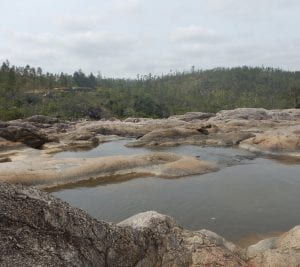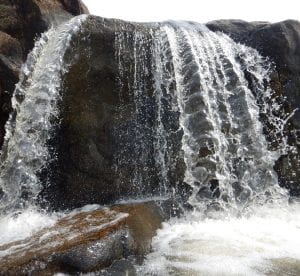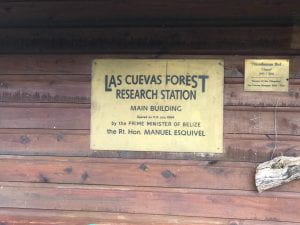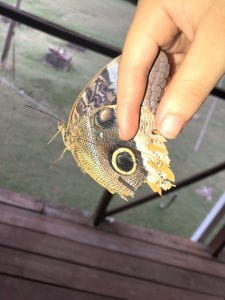I awoke to the sound of birds (or rather, people birding). After breakfast and mourning my last hours of reliable WiFi, I loaded the van with the class to travel an hour to Rio on Pools in the Mountain Pine Range. While there, we swam, but mostly slipped, slid, and stumbled on the algae that blanketed the rocks. We also dunked our heads in waterfalls. Once dried and changed, we embarked on another hour-long journey to the Caracol Ruins.
At the Caracol Ruins, there were many butterflies that appeared to be of the same species (a variant of swallowtail as indicated by long ‘tails’ protruding from each hindwing). The ruins themselves were magnificent, but also a pain to climb; the steps of the ruins were so high that every time I took a step, my knees rose to my chest. It was all worth it though because now I can say that I have conquered the tallest structure in the country of Belize! Also, I stood within a tomb, which was dank, and the buttresses of a ceiba tree. After traversing the ruins, the class drove an hour to Las Cuevas Research Station, our final destination for the day.
Some other cool, miscellaneous things observed en route:
- Mayan temple replica currently being constructed by a man who claims to be a descendant of a Mayan god
- 3 military checkpoints, the second of which was a Dutch army base
- carsickness 🙁
At Las Cuevas, I found and captured a butterfly in the restroom. It was sitting with its wings closed (as is the tendency of the butterfly), so I identified it as a butterfly even though the coloration (lacking in vibrancy) was more similar to a moth’s. The butterfly was tan/brown with an eyespot on each wing (forewing and hindwing, 4 eye spots total). The hindwings had significant perforations, but they were erratic in size and depth, so I believe that they were not present as a result of species-specific characteristic.
It began raining lightly (forest’s namesake weather!) Scott heard then saw a scarlet macaw.
After dinner, the class ended the night with a discussion on research question, and lectures on trees, birds, and the paradox of tropical soils.




